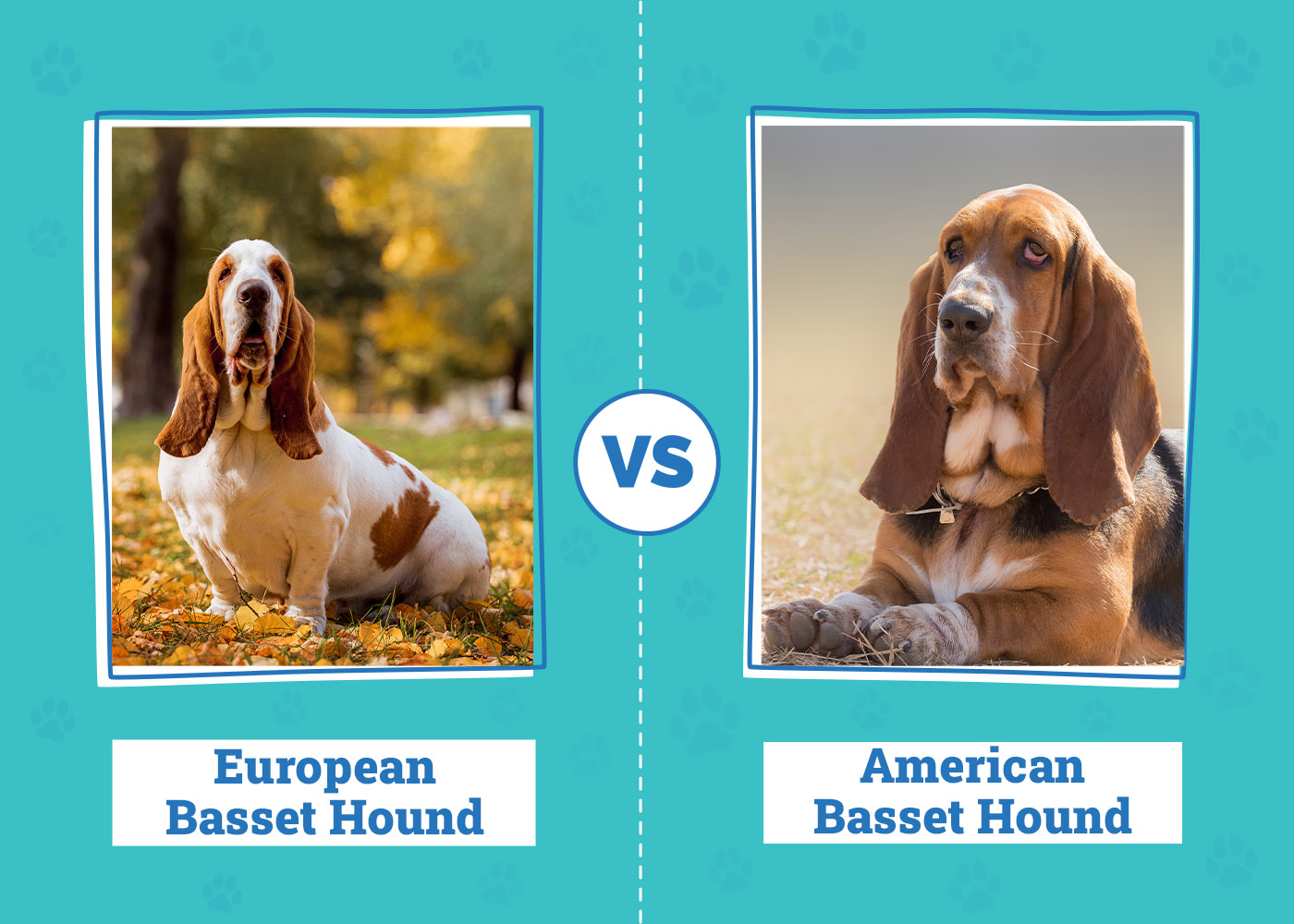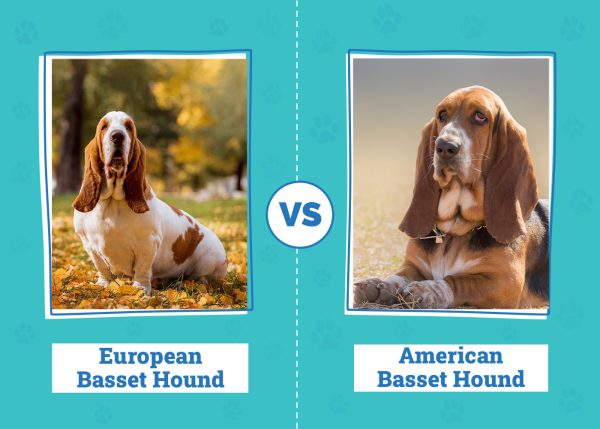Click to Skip Ahead
Basset Hounds are recognizable for their floppy ears, wrinkles, low-to-the-ground bellies, and droopy eyes, but did you know the difference between European and American Basset Hounds? These dogs both make wonderful companions and are incredibly similar, so how do you pick between them? Well, let’s take a closer look at both breeds, so you can decide which one will be a better fit for your family!

Visual Differences
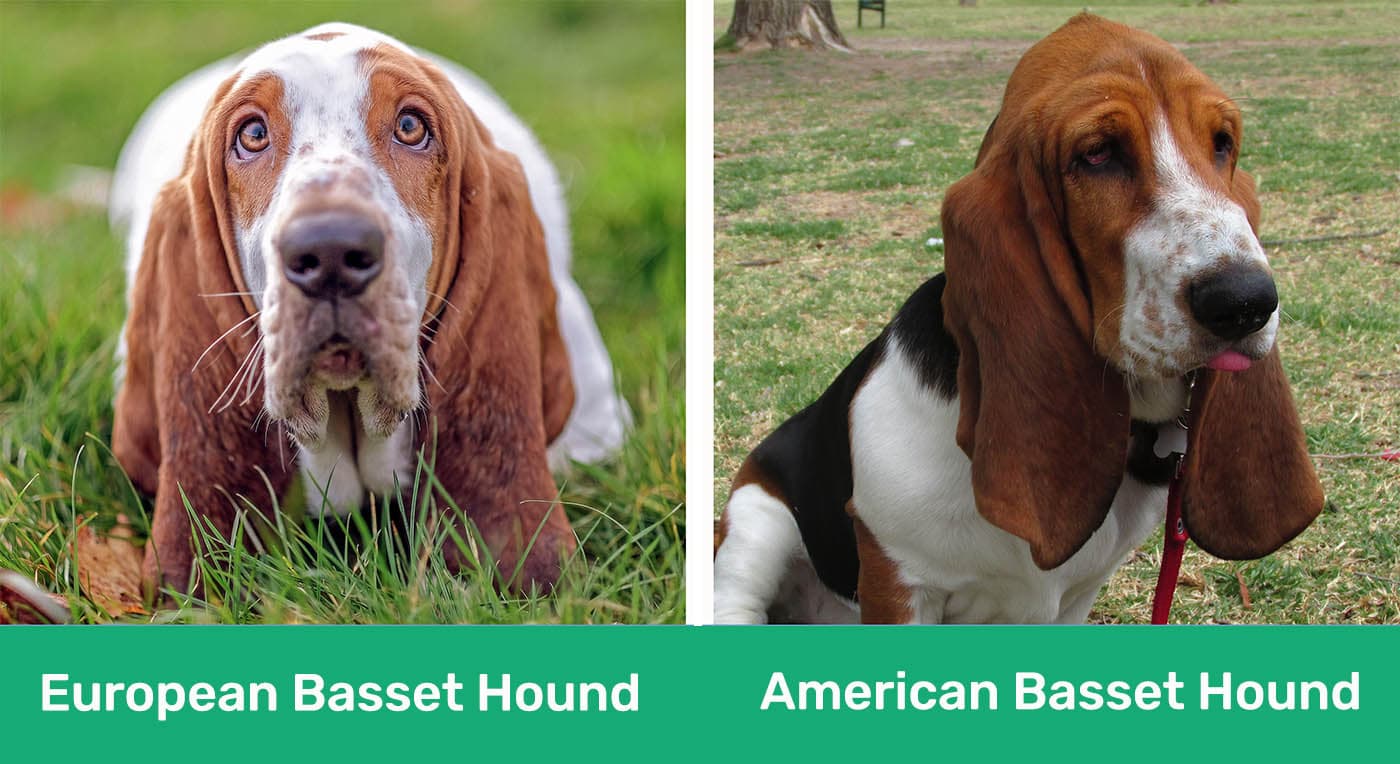
At a Glance
- Average height (adult): 10–15 inches
- Average weight (adult): 40–70 pounds
- Lifespan: 10–12 years
- Exercise: 1+ hours a day
- Grooming needs: Moderate
- Family-friendly: Yes
- Other pet-friendly: Often
- Trainability: Intelligent, stubborn, one-track minded
- Average height (adult): 11–15 inches
- Average weight (adult): 40–80 pounds
- Lifespan: 10–12 years
- Exercise: 1+ hours a day
- Grooming needs: Moderate
- Family-friendly: Yes
- Other pet-friendly: Often
- Trainability: Intelligent, easily distracted, independent

European Basset Hound Overview
The European Basset Hound can be traced back to 6th-century France and is an older breed than the American Basset Hound. But let’s look at how else this breed differs from its American counterpart.
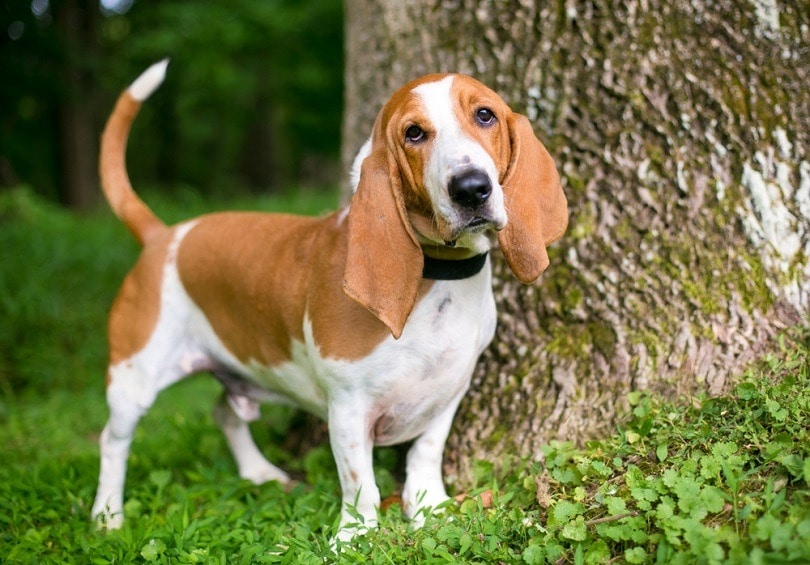
Personality / Character
The European Basset Hound was bred to hunt small game, and they have never lost their prey drive. However, despite this long history of working alongside humans, they have adapted well to being companion dogs. They’re loyal and loving and generally get along well with every family member, whether human or animal. They are a relaxed breed, which can sometimes make it challenging to get them up and moving.
Training
Basset Hounds are intelligent and have a working history, so you will be forgiven for assuming they are easy to train. The European Basset is incredibly stubborn and can be lazy, so keeping them motivated is a challenge. The trick is to keep your training sessions short and use positive reinforcement to keep them interested.
Exercise
Not only are European Basset Hounds a little lazy, but they also love their food, which means they’re prone to putting on weight. So, exercise is vital. They need at least an hour of exercise a day, such as a walk around the block or playtime, like fetch or scent games. Exercise will also provide mental stimulation, which stops your Basset from becoming bored and developing more issues, such as exhibiting undesirable behaviors or showing signs of being anxious or stressed, which can impact their physical health.
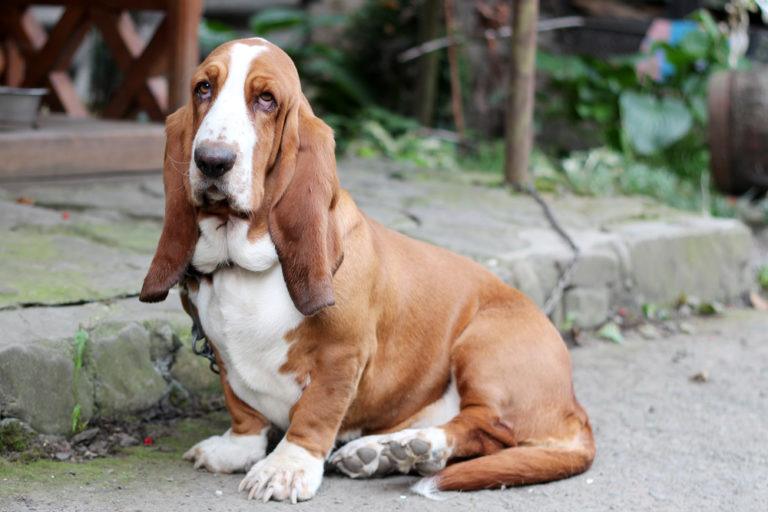
Health & Care
One way that European Basset Hounds differ from American Bassets is that they tend to be more wrinkly, which means they require slightly more care. They are prone to ear and skin infections, and their chances of developing an infection are increased with extra wrinkles. They will need to be bathed at least twice a week, and you will need to pay close attention to their ears, wrinkles, and folds when you do. Ensure you check their ears and wrinkles daily for signs of irritation or infection. Some other common health problems both Bassets are prone to are:
- Arthritis
- Carpal valgus
- Ear and skin infections
- Glaucoma
- Hip and elbow dysplasia
- Obesity
- Patellar luxation
Grooming
When it comes to grooming, European Basset Hounds must be brushed every day or at least every 2 days. Their coats are smooth and short, so they aren’t too high maintenance to care for in that sense. Like all dogs, you must brush their teeth—ideally twice a day or at least three times a week. Also, you will need to trim their nails.
Suitable For:
The European Basset Hound is fantastic for families, single people, and people with other pets as long as you take the time to socialize them early. You will need the patience to train them and care for their skin, wrinkles, and floppy ears. They may be difficult for first-time owners to train due to their stubbornness, but if training is an issue for you, you can enroll your pup in professional dog training classes.

American Basset Hound Overview
The American Basset Hound is incredibly similar to the European. They grow just slightly bigger, but not in such a considerable amount that it will affect your choice, and they are slightly less wrinkly than the European Basset.
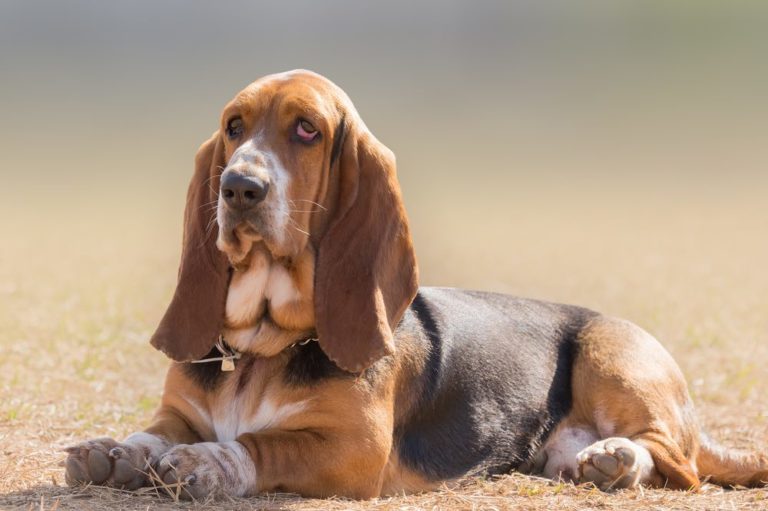
Personality / Character
The American Basset Hound is known for being friendly and gentle like its European counterpart. They love their owners but aren’t too clingy. However, they don’t enjoy being alone for long periods as they can suffer from bouts of loneliness, which translates into some undesirable behavior, like howling or barking. A human or animal companion can help with this.
Training
Thanks to their love of food, using treats in training can make your life a little easier. These are scent dogs, and they’ve never lost their instinct, so you will need to pay close attention to training when out walking because if they catch a whiff of something that smells particularly interesting, they will give chase. Like the European Basset, keep your training sessions short and use positive reinforcement to motivate them.
Exercise
While they were trained to hunt and be active, the American Basset Hound isn’t the most active dog, so it will be up to you to tempt them to move. They need at least an hour of exercise, so try and make it fun! Thanks to their weight and shape, they might need help with jumping off furniture and getting out of the car. To prevent injuries from jumping, you can place ramps near your furniture and use one attached to your vehicle.

Health & Care
The American Basset Hound is identical to the European Basset in every way, except they are less wrinkly. However, they are still prone to ear and skin problems, so you must pay close attention to these areas to ensure they don’t become irritated or infected. Because they are both prone to the same issues, it’s crucial to maintain regular veterinarian visits, especially as your Basset ages, as your vet is likely to pick up any problems early on.
Suitable For:
Just like the European Basset Hound, the American Basset is an excellent companion for all types of families and single pet owners. They don’t like being alone for long periods and are quite lazy when it comes to exercise, so they aren’t the dog for you if you enjoy long hikes in your spare time. You must invest time in training and caring for their specific needs, like cleaning their ears and wrinkles.
Which Breed Is Right for You?
The European and American Basset Hounds are incredibly similar breeds, and they’re so similar that you might wonder why they are recognized as separate breeds. While they are practically the same, the names “European” and “American” specify physical trait differences as opposed to their lineage. American Basset Hounds are slightly bigger, while European Bassets have more wrinkles.
So, if you have the time to train and care for these beautiful dogs, it’s clear that whichever breed you go for, they will make a wonderful addition to your family.
See also:
Featured Image Credit: (T) Marry Kolesnik, Shutterstock | (B) Bill Anastasiou, Shutterstock

